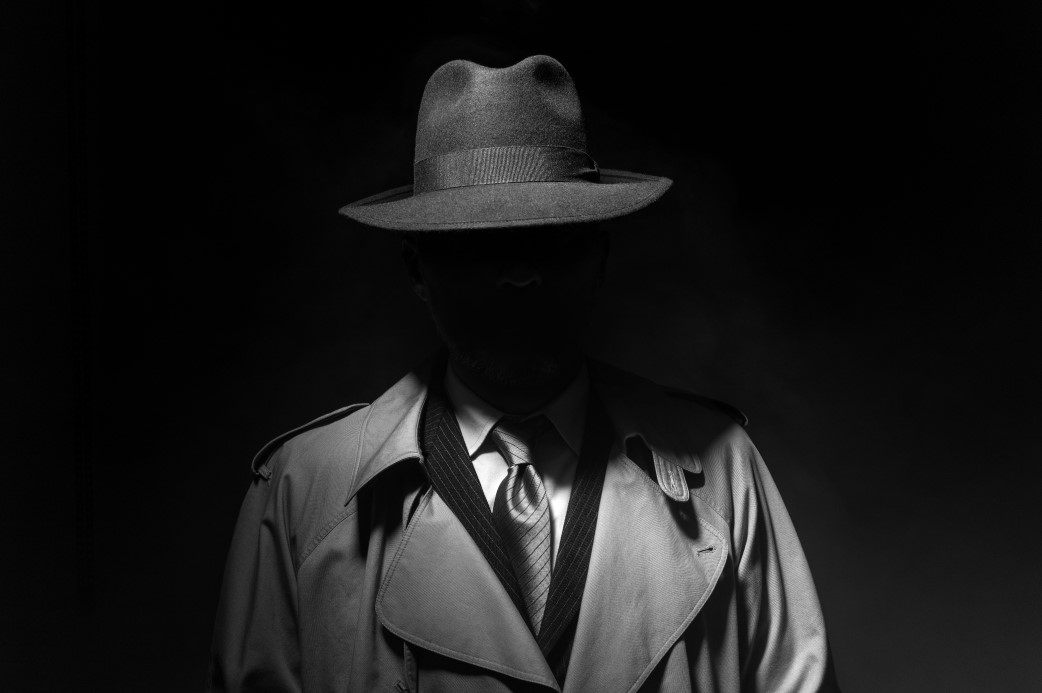I Got Guys from New Jersey . . .
St. Peter’s College Peacocks mens basketball program continues its improbable journey through the NCAA Tournament. Truly against the odds as a 15 Seed out of 16, they beat the University of Kentucky Wildcats in the opening round of the Tournament. They followed up this biggest win in school history by defeating Murray State Racers in the second round. The Peacocks now face the Purdue Boilermakers in the Sweet 16. Whether called Cinderella or David taking down Goliath, the Peacocks remain on a magical trip which may well continue.
Personally, I prefer the David versus Goliath analogy as David actively defeats the six cubit high giant. The Peacocks have been taking down the giants of college basketball. No doubt should exist as to St. Peter’s College status as David. St. Peter’s, a Jesuit Catholic college, has approximately 2,100 students. The school is nestled in an urban setting in Jersey City not exactly in the most desirable area. The school caters mostly to commuter students, many of whom are among the first generation in their families to attend college. St. Peter’s College is a minority majority student body. As detailed below, the college’s gym is tiny compared other Division I schools and the basketball team must share the facilities with all other sports and even intramural activities.
Yet, some commentators opine that there no longer exist true David versus Goliath scenarios in college basketball. The Transfer Portal in college basketball allows student athletes much more freedom to transfer between and among college programs. The pundits claim that this dynamic has benefitted some smaller schools in attracting basketball talent. Notably, these same pundits generally fail to acknowledge that larger schools seek to cherry pick or poach proven and talented players from smaller programs. Regardless, I think it remains beyond dispute that St. Peter’s classifies as a true David.
David Versus Goliath By the Numbers
So far, in the NCAA Tournament, St. Peter’s College played and defeated Kentucky and Murray State. In this Region of 16 teams, St. Peter’s received the 15th Seed. Kentucky, with its amazing season with victories over top-ranked programs, was ranked number 2 in the Region. Murray State, winners of 21 straight games, was ranked 7th. St. Peter’s will now play Purdue, ranked 3rd in the Region.
Kentucky was an 18.5 point favorite to beat St. Peter’s
The entire athletic department budget for St. Peter’s College, for all sports, is $7.2 million. In comparison, the base salary for Kentucky Coach John Callipari is $8.5 million. Kentucky’s athletic department budget is a staggering $140,000,000. Murray State’s athletic budget is $14,700,000. Purdue, the next opponent of the Peacocks, boasts an athletic department budget just over $100,000,000.
St. Peter’s basketball team does play in a new, modest multi-purpose recreational facility commonly called the Run Baby Run Arena. The basketball court serves as the court for volleyball and other sports as well as basketball. With collapsible bleachers, the Run Baby Run Arena can seat 3,200. While the Run Baby Run Arena was being built the last few years, the St. Peter’s team practiced at a local high school gym with no heat and no shot clock. Home games were played wherever St, Peter’s could locate an available nearby court. Just envision Kentucky five star prima donna recruits and Coach Callipari’s perfectly tailored suits in that environment.
At the University of Kentucky, home games are played at Rupp Arena which seats well in excess of 20,000. The Kentucky practice facility built in 2007 cost $30,000,000 or more than 4 years’ of St. Peter’s athletic department annual budgets. The Kentucky practice facility includes separate basketball courts for men and women programs, weight rooms dedicated for use by athletes and lounges. Does not appear to be any multi-use facilities at Kentucky while the St. Peter’s team needs to schedule practices around a dodgeball tournament at its gym.
Purdue, a/k/a Goliath III, has 35,000 undergraduate students. The number of alumni of St. Peter’s cannot match that figure. St. Peter’s President notes that the school has 34,000 living alumni, but many more if you count the deceased alumni in the school’s 150 year history.
By any metrics, St. Peter’s ranks among the smallest Davids standing toe-to-toe with largest of the Goliaths.
The Deck Remains Stacked Against All the St. Peter’s of the World
St. Peter’s College gained an automatic bid to the NCAA Tournament by winning the Metro Atlantic Athletic Conference (MAAC) Championship. Admittedly, St. Peter’s was one of the top teams in the MAAC this year. However, St. Peter’s and all other MAAC schools chased Iona College all year long.
Iona, coached by Rick Pitino making his against-all-odds comeback bid as a college coach, assembled a top group of players at Iona, and ran away with the MAAC regular season. Iona beat Tournament teams Alabama and Yale along the way as well as St. Peter’s. Unfortunately for Iona, they lost during the MAAC Conference Tournament. Iona immediately became beyond consideration for an at-large bid by the NCAA Tournament Selection Committee for the field of 68 teams. Iona stood with a record of 25-8 after winning the regular season MAAC Title. Yet, the Selection Committee debated only whether to accept the 7th and 8th place teams from the Big Ten Conference or the 6th place team from the Big East instead of the first place team from the MAAC. The system actively works against teams from a conference like the MAAC.
The point remains that St. Peter’s only way into the NCAA Tournament was to win the MAAC Championship, which it did. The reward: a 15 Seed and date to play college basketball superpower Kentucky. As to those “Power Five” conference teams which finished so low in their leagues, they were invited to the Tournament, but now find themselves back at home after losses. The Peacocks play on in the Sweet 16.
The NCAA Tournament Committee assigned St. Peter’s to the East Region in the Tournament. That action appears appropriate for a Jersey school UNTIL you recognize that the first and second round East Region games for St. Peter’s were played in that great east coast city of Indianapolis, Indiana.
The University of Kentucky student fans would need to endure a grueling 3 hour drive to reach Indianapolis. The poor Murray State fans would have to treck 4 hours. St. Peter’s College students, so fortunate to be assigned to the East Region, would only have to drive a mere 11.5 hours to reach Indianapolis. Courtesy of the NCAA Tournament Committee, Kentucky and Murray State essentially enjoyed “home games” in these contests.
Jersey Attitude
The basketball coach for St. Peter’s, Shaheen Holloway, embraces and embodies the spirit of the school. Recruiting predominantly in New Jersey and New York City, Holloway put together a group of tough, chip on the shoulder ballplayers apparently loyal to him, to each other, and to the school. These players have been passed over by the larger, established basketball programs the likes of which St. Peter’s now defeats in the Tournament.
After victories against Kentucky and Murray State, a journalist asked Coach Holloway whether his players were intimidated heading into contests with top tier basketball programs. Holloway, himself a product of Jersey City and former Seton Hall University player, responded: “I get guys from New Jersey and New York City. You think we’re scared of anything?”
There it is. Classic Jersey Attitude. Blue Blood basketball teams as the competition? Athletic budgets 10 or 15 times larger than your own? Practice facilities much nicer than your own new gym? NCAA rules and processes intended to defeat you off the court? Eleven and a half hour road trip for your fan base?
Ahh. Fagetaboutit. The St. Peter’s team plays with Jersey Attitude. They drive the ball to the basketball rim against much taller players. They routinely out-rebound the much taller opposing team. They are scrappy. One of their players sports a bandage above his eye due to an elbow thrown by one of his own teammates during practice.
Any “us against the much larger world” mentality goes well beyond the St. Peter’s players and their coach. The student body at a college such as St. Peter’s fairly quickly understand their own instant bonds. Upon graduation, they become part of the St. Peter’s for life clique. Without sounding like a cult, they are a community and remain there for each other.
I get it. I attended Saint Bonaventure University, a small Catholic school isolated in its own way (mostly geographic). There are no fraternities and sororities and no need for them. At a school of that size, you get to know just about everyone. You essentially become one big fraternity, and in my case, the Bonaventure Family. The sense of community transcends the time you attended as you possess shared experiences with so many who attended decades before and after your own time in the Enchanted Mountains.
Years ago, my uncle introduced me to a his buddy who graduated from St. Bonaventure about 15 years before I even attended the school. We spoke for a half hour over a beer or two and my uncle watched in amazement. My uncle noted that listening to our conversation, someone would think that we had lived across the hall from each for years in the same dorm while attending classes together. My uncle commented that our bonds appeared instantly. I corrected him and told him that the bonds were actually always in place. We only needed an introduction.
About four years ago, St. Bonaventure’s basketball team made it to the NCAA Tournament and played its first game in Dallas, Texas. I packed up my youngest son and we drove from Memphis to catch the game. Before the game, a large outdoor bar and restaurant became the designated pre-game meeting area for Bona fans as well as fans of other schools playing at the arena. Although we were well over 1,000 miles from St. Bonaventure, New York, students and alumni well- represented the school. My son kept asking if I knew these other folks in Bonaventure shirts as it appeared to him that we were long lost friends. While we may not have met previously, we were indeed old friends. Side note. The bar ran out of beer and it was not the Texas Tech, TCU or Florida fans who drank the place dry.
Not only do you get to know so many others when attending a smaller university, you get to know your professors and they get to know you. I am some thirty years removed from my time at Bonas and I remain in touch with some professors – at least those who have not yet retired. We have become friends over the decades. I travel back to assist with moot court competitions and gladly assist however I can do so.
While at St. Bonaventure, a few of us took a road trip to Michigan State University to visit my friend from high school. We met up with my buddy when he was getting out of an Economics class. He was exiting an auditorium with his fellow 150 or so classmates. I was taking an Economics course that same semester, using the same textbook, but with a class size of about 15 students. I had to explain to my Economics professor that I would miss Friday’s class because of the planned road trip to Michigan State. If you did not make it to class at Bonaventure, it was easily noted by the professor. You instantly became part of the fabric of the community.
A larger university setting offers tremendous benefits. Some of those opportunities could never be available at smaller institutions. Nonetheless, some of these smaller schools offer comradery and bonds which only grow stronger over time. You share experiences on and off campus which all the students experience. You graduate with a sense of self; a sense of place; and a sense of belonging. You will forever belong to that community. It remains special, in part, precisely because it is small and the school remains so dedicated to its mission.
So, I am on board in rooting for the Peacocks. They are fun to watch and they clearly enjoy playing with each other. In any classic David versus Goliath story, nobody roots for Goliath. Goliath has all the advantages. Goliath holds all the resources and is even expected to easily dismiss any would be giant slayer. When Goliath triumphs – as is typically the case – we respond with: “Oh, of course, no one could beat Goliath under these circumstances, especially not little David.”
Then, at rare times, David squeezes out a victory. So far, the Peacocks have two victories and look to slay more giants before they are done. Good luck to the Peacocks on behalf of all the smaller colleges and universities with equally insane alumni. And if Lady Luck is not on your side, show ‘em some Jersey Attitude. After this weekend, perhaps the St. Peter’s fans can cross the Hudson to Madison Square Garden to root for St. Bonaventure who just reached the Final Four of the NIT Tournament! Let’s hope they all keep playing!










